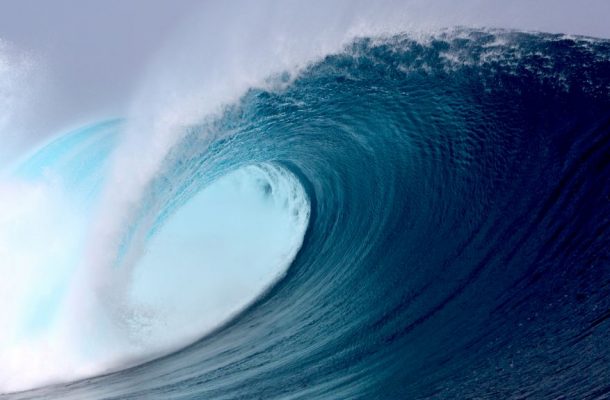NBA trades are like waves. Each team hopes to catch the biggest one and they are largely unpredictable. I’ve argued all season that the Pelicans go out and catch the biggest wave they can, but sometimes the trade winds don’t blow the right way and an opportunity doesn’t materialize. For example, it is entirely possible that the Washington Wizards show no desire to trade Bradley Beal at the deadline – in which case the Pelicans need another plan of action. I am here to lay out some paths the Pelicans can take to acquire wing talent without spending draft assets. Some of these paths could even involve the Pelicans grabbing some draft assets for their own. The logic behind this idea is to hold on to your assets until the next wave, and if you can increase your stockpile in the process, even better. Things that do not materialize at the deadline may resurface in the summer or a new opportunity may manifest itself. This strategy is also a natural hedge should Davis decide to leave. Without further ado, I present to you 3 options.
Option 1: Otto Porter
- Pelicans receive: Otto Porter and Jeff Green
- Pelicans send: Julius Randle, Wesley Johnson, and E’Twaun Moore
- Tailoring: Draft pr cash considerations via the Wizards, Tomas Satoranksy instead of Green.
There are several ways to structure an Otto Porter trade, but in order to avoid sending a first round pick for him, I constructed the deal to send no long-term bad salary. Those of you who read “The Beal Deal” will be familiar with this structure, in addition to the large TPE the Wizards might be able to generate in the process if the trade is structured correctly. This move saves the Wizards almost $15 million this summer, while giving them two pieces to be competitive this year. It also helps lower the Wizards’ tax bill and can take them out of it entirely should they choose to include Satoransky. The benefits for the Pelicans are obvious – they acquire 2 players with positional versatility to help on the perimeter while retaining their own pick. The Pelicans should try and pressure Washington to surrender draft capital, but that would be unlikely to go through.
Option 2: Nicolas Batum
- Pelicans receive: Nicolas Batum, Frank Kaminsky, Charlotte 2019 protected first round pick
- Pelicans send: Julius Randle, Wesley Johnson, and E’Twaun Moore
- Tailoring: Pick protections
The objective of this trade is very similar to the one for Porter. Pelicans send out short term, playable salary to a team that needs to rid itself of a large contract and needs breathing room under the hard cap ( for any subsequent moves they may wish to make). Charlotte has already been rumored to be shopping Nic Batum by offering Frank Kaminsky as a sweetener. Unfortunately for them, Kaminsky isn’t quite enough for teams to swallow the 2 years and $52 million remaining on Batum’s contract after this one. The Pelicans should press hard for a first round pick here, even if that means no Kaminsky. The pick is the real asset, while Batum is simply a guy who provides wing depth and fits well on the team.
Option 3: Allen Crabbe
- Pelicans receive: Allen Crabbe, Denver 2019 first round pick
- Pelican send: Solomon Hill and Darius Miller
- Tailoring: Minor assets or minimum contracts from either side
The Brooklyn Nets want the ability to create two max contract slots for this summer’s free agency. As it stands, they cannot reach that amount without renouncing one or both qualifying offers for D’Angelo Russell or Rondae Hollis-Jefferson. Allen Crabbe has a player option this summer for $18.5 million. This is a significant obstacle for the Nets in their pursuit of marquee free agents. The Pelicans can assist the Nets by saving them just over $6 million. All the Nets have to do is surrender the Denver pick they received in the Kenneth Faried trade, which would currently be the 28th position in the draft. The Pelicans net what will be a large expiring contract for next season, but also a playable shooter who rebounds better than Miller. Again, the pick is what makes this trade work.
Commentary
As I have said before, the ability to eat “crap” is an asset. The Pelicans can potentially position themselves to eat salary crap, but net themselves useful wing players and draft assets. The best case scenario would be for the Pelicans to make one of the first two trades, and then the Allen Crabbe trade to head into the summer with at least 2 (maybe 3) first round picks. Taking on long term salary can be precarious given the pending Davis decision, but acquiring the accompanying draft assets allows the Pelicans restock the war chest for a run at a star at a later date. It’s Bradley Beal now, but who knows which star will want out come this summer? The Pelicans need to be ready to pounce with every asset possible. If it doesn’t work out – having cost controlled players on rookie contracts isn’t a bad way to shore up depth either. I’m not convinced this strategy will be enough to sway Davis into staying, but I do think it can make the Pelicans a better team in the short term without compromising the future. It’s about getting another shot at a star – catching the next wave. Should Davis chose to leave anyway, the draft picks will become all the more important for building the next core.
